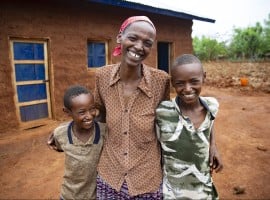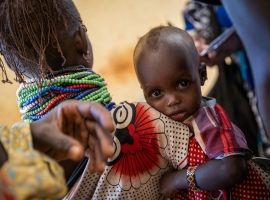
Read our 2024 annual report

Knowledge Hub
Conflict is a fact of life in many of the communities where Concern works and is often a deciding factor when we enter a new country or territory.
It creates large humanitarian needs, often leaving people unable to work or access food. It overwhelms healthcare systems and keeps millions of children out of school. It also leaves vacuums for related forms of violence (especially against women) and can lead to a lifetime of psychological and emotional issues, even if the fighting is short-lived.
In light of this, Concern often responds to conflicts to account for both their immediate impact and their potential for generations of lingering damage. Here are 13 countries and territories where we’re currently doing this vital work.
1. Afghanistan

Despite development advances in recent years, Afghanistan remains in an extremely fragile state following nearly four decades of instability. Violence continues to undermine the country’s development, with almost two-thirds of the Afghan population living in areas directly affected by conflict. Between 2009 and 2022, the Council on Foreign Relations estimates that there were 111,000 civilian casualties in Afghanistan.
This has also contributed to humanitarian need in the country, with nearly half of all Afghans in need of aid. In 2025, the UN estimates that 22.9 million people require humanitarian assistance.
2. Chad
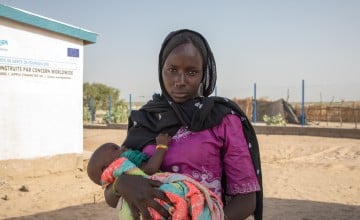
Chad has experienced some of the same conflict affecting the Sahel (see below). However, there is a larger amount of intercommunal conflict centred on the Lake Chad Basin that has has affected the region (which also includes parts of Cameroon, Nigeria, and Niger) for the last 15 years. Across the region, 10.2 million people require humanitarian assistance. Chad’s humanitarian needs nationwide increased by 1 million people between 2024 and 2025, in large part due to conflict.
3. Democratic Republic of the Congo

The scene for one of the worst civil wars in African history, the Democratic Republic of the Congo has moved from the national conflict of the late 1990s to a series of smaller, localised conflicts focused in specific regions and centred on land, resources, and power.
While conflict has become more localised, that does not lessen its damage, with sporadic waves of violence prevailing throughout the country — most recently in the eastern provinces of North and South Kivu. As of 2025, almost 7 million people have been forced to flee their homes, while more than 21.2 million people require humanitarian assistance.
4. Ethiopia
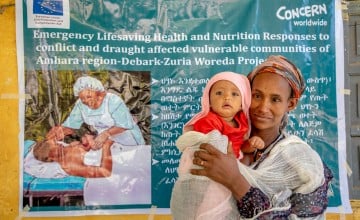
Since November 2020, Ethiopia has faced regional conflict beginning in the Tigray region and, later, in Amhara. As of early 2024 (most recent data), the UN estimates that 28.6 million people across the country require humanitarian assistance, with many affected by regional violence. A peace deal was signed in Tigray in November 2022, but the recovery efforts there continue, while needs remain high in Amhara.
5. Gaza
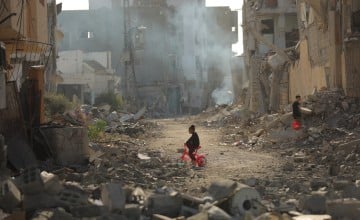
According to the United Nations, roughly 90% of Gaza’s population (close to 2 million people) have been forced to flee their homes since October 2023, with thousands of people losing their lives and many thousands missing. Livelihoods and food systems have been decimated, and health and hygiene services have both been brought to the brink of collapse.
Concern joined our Alliance2015 partner CESVI to deliver crucial aid to displaced people in this part of the Palestinian territories. A water, sanitation and hygiene (WASH) and food security project began in May 2024, with the aim of reaching as many people as possible in an extremely fragile context.
6 & 7. The Sahel (including Burkina Faso & Niger)

Crisis knows no borders. A decade of armed conflict in the western Sahel region of Africa has resulted in a deteriorating humanitarian situation in the region, including Burkina Faso, and Niger.
UNOCHA estimates that nearly 29 million people will require humanitarian aid across the region in 2025, especially given renewed hostilities and added political instability. This includes 5.9 million people in Burkina Faso and 4.5 million in Niger.
» Learn more about the crisis in Burkina Faso
8. Somalia

The beginning of the ongoing Somali Civil War is a subject of debate. Many organisations (including the UN) say it was 1991. Other experts argue that it started as many as 10 years earlier. This gives you an idea of how long the country has faced violence and insecurity, regardless of how it’s been labelled.
Conflict is one aspect of the country’s multifaceted and protracted humanitarian crisis, and one that touches on many other areas. As Concern Somalia’s country director, Abdi Rashid Haji-Nur, explains: “Operationally, it is difficult for national and international humanitarian agencies to deliver services to people in the different parts of the country. As long as there is absence of efforts to contain and to deescalate those tensions and conflicts, we will be having challenges in terms of having access.”
9. South Sudan

Prior to the outbreak of conflict in December 2013, there was reason to be hopeful about the future of South Sudan. Not only had secession been peaceful, but the country was also host to rich oil fields. Many were optimistic that 2013 would be a year of development and progress. Instead, the conflict — which has led to breakdowns in social services and protection — continues to have severe consequences for a country where human development ranks among the worst in the world. In 2025, 5.4 million people require humanitarian aid, including 2.1 million facing acute malnutrition.
10. Sudan
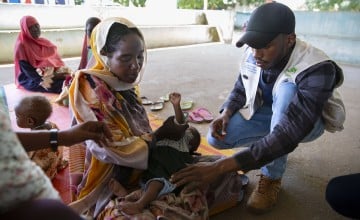
On April 15, 2023, violent clashes between the Sudanese Armed Forces (SAF) and the paramilitary Rapid Support Forces (RSF) in Sudan’s capital of Khartoum sparked a nationwide conflict that has quickly become one of the world’s largest humanitarian crises. Over two years later, nearly half of the country’s population require some form of humanitarian assistance and the situation shows no signs of improving. On August 1, 2024, the Integrated Food Security Phase Classification declared famine in North Darfur.
11. Syria

Since early 2011, a civil conflict in Syria has resulted in enormous suffering for millions of people. Once a country with a thriving middle class, 90% of Syrians now live below the poverty line. Despite some major political shifts at the end of 2024 that have enabled many displaced Syrians to return home, internal and regional violence still persists and the UN estimates that 16.5 million people will require humanitarian assistance in 2025. The country remains the world’s largest refugee crisis and second-largest internal displacement crisis.
12. Ukraine

In early 2022, an eight-year crisis in eastern Ukraine became a major conflict in just a few weeks. Within the first 24 hours of fighting, the UN reported 240 civilian casualties, including 34 deaths. Since then, the violence has not abated, and intense fighting has spread across the country. In less than a year, Ukraine became one of the world’s largest refugee crises and humanitarian crises, with 12.7 million people (nearly 40% of the country’s population) in need of some form of assistance in 2025.
13. Yemen
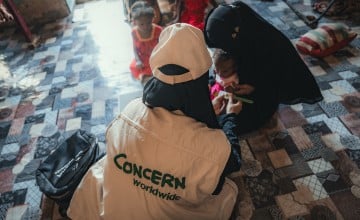
In 2014, Yemen — the lowest-income country in the Middle East — became the site of a civil war with proxy inventions. Eleven years later, the country has made several “worst” lists, among them the world’s worst humanitarian crises, worst hunger crises, and largest displacement crises. However, besides these headlines, Yemen remains largely ignored in western media — especially when it comes to the net effects that the last decade of conflict has had on the people living there. 19.5 million people will require humanitarian assistance in 2025.
Countries in conflict: Concern’s response
Last year, Concern responded to 50 emergencies in 22 countries and territories, reaching 16.8 million people. Conflict played a role in many of these emergencies. In each context our goal remains the same: to fulfil our humanitarian mandate.
When an emergency strikes, we seek out the poorest and hardest-to-reach communities to meet their immediate needs, and work with them to design innovative, fast and effective responses. We stay with them to help rebuild their lives and to ensure that they are better able to cope with future crises. Your support allows us to do this vital work.
